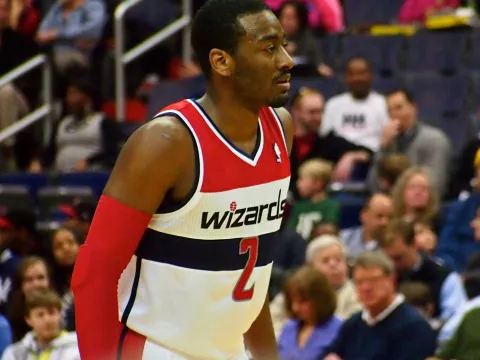- AdventHealth

Washington Wizards point guard John Wall recently suffered an Achilles tendon rupture, likely benching the basketball star for 12 months.
“This is a long journey of recovery that can be common for this serious of an injury, especially if you are an athlete and want to return to such a high level of physical function,” says Madison Robbins, PT, DPT, OCS, an orthopedic clinical specialist physical therapist at AdventHealth.
While many may assume that Wall suffered this injury while pushing the limits on the court, he in fact ruptured his Achilles after a slip and fall in his home. The message here is that you don’t have to be an NBA star to experience this sort of injury: It can happen to anyone.
And if it happens to you or a loved one, we have some important information about how to recover and get back to living your best life as safe and effective as possible.
Robbins explains what a journey back to whole health might look like for anyone recovering from an Achilles tendon rupture.
Achilles Tendon 101
The Achilles tendon is a strong fibrous cord that connects calf muscles (the gastrocnemius and soleus muscles) to the heel bone. This tendon is very important for proper flexion of the foot and ankle, which is required for walking, running and even jumping.
“If the Achilles tendon is overstretched, which can happen while playing sports or with an accidental slip or fall, it can tear or rupture partially or completely,” explains Robbins. “It usually takes quite a bit of force, such as one’s entire body weight coming down on the Achilles tendon to cause a rupture or tear,” she adds.
Symptoms of an Achilles Rupture
“Most people are aware when their Achilles tendon ruptures because it usually is caused by some fall or powerful movement and leads to immediate pain and limited mobility,” says Robbins.
If the Achilles tendon ruptures, symptoms might include hearing a “pop” and then experiencing a sharp pain toward the back of your ankle and lower leg. Trouble walking is also a common symptom that comes with this serious injury.
Treatment for Achilles Rupture
“Achilles tendon ruptures will require surgery to repair,” says Robbins.
The extent of surgery, however, varies person-to-person depending on if the Achilles tendon was partially or fully ruptured.
“For athletes such as John Wall, who need a lot of strength and flexibility to push off and propel themselves in the air when jumping, surgery and then careful rehabilitation with physical therapy are the critical steps toward healing,” explains Robbins.
Regaining Strength and Function After an Achilles Injury
Robbins shares that most patients have some guidelines from their surgeon, with a protocol that informs the physical therapist in their own treatment planning.
“We communicate with surgeons frequently to update them on each patient’s progress and make sure that we are helping the patient progress safely and effectively,” Robbins says.
She emphasizes, “For this injury it is so important to progress through rehabilitation in prescribed phases that promote healing of the Achilles tendon while also helping the patient steadily regain strength and mobility. This can only be done with the expertise of a licensed physical therapist.”
Robbins explains that some common techniques in the treatment of Achilles’ tendon ruptures include:
- Safe and supervised progression of weight-bearing exercises in phases
- Joint mobilization exercises that can help with stiffness in the ankle that often occur from the injury and after surgery
- Gentle soft tissue massage of the Achilles tendon and calf muscles to promote blood flow to the area and progressive range of motion
Robbins explains, “It’s very important for patients with Achilles injuries to progress through phases of weight bearing exercises with the goal of eventually being able to bear all of their weight on their foot. You can’t do this too quickly after surgical repair of the Achilles tendon.”
She says that patients are typically wearing a boot to stabilize the ankle and lower leg immediately after surgery, with use of crutches or other assistive devices until they are able to progress to wearing a tennis shoe without any assistance when walking.
A Special Focus on Whole-Person Healing
“If a patient is coming to us after surgery and requires a longer treatment plan, we know it’s so important to be positive, encouraging and supportive during their recovery back to normal function. We are their guide and their coach to help them stay positive and safely move forward to reach their full potential,” Robbins concludes.
If you’re in pain or need whole-health healing from an injury, let us help. Find AdventHealth Sports Medicine and Rehabilitation services nearest you.



